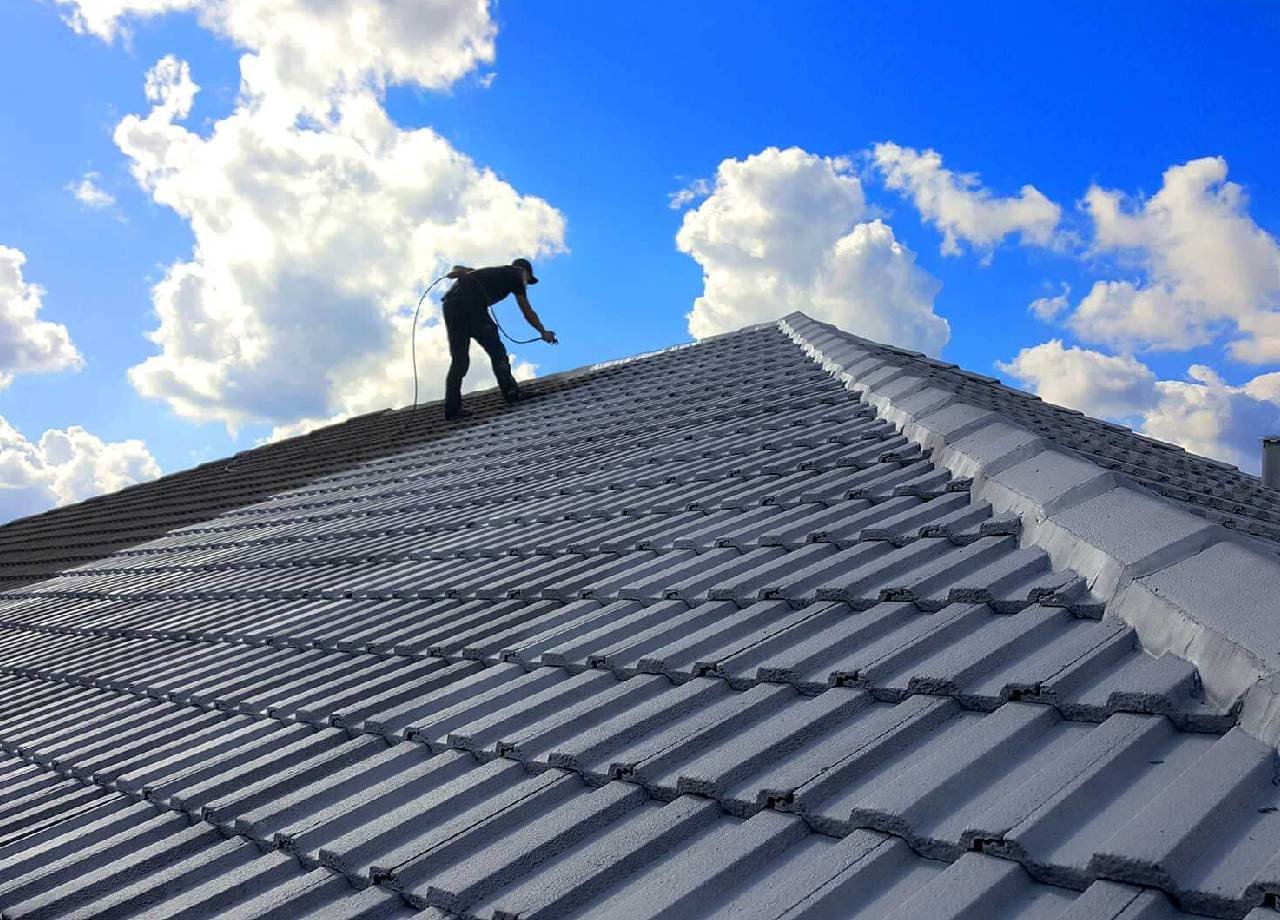A Comprehensive Guide to Effective Roof Flat Roof Installation
The ins and outs of flat roof setup need a meticulous strategy, beginning with an extensive understanding of various flat roofing system types and the necessary materials needed for ideal efficiency. A successful installation hinges not just on the choice of products but additionally on the preparation and implementation of each action included in the process.
Understanding Flat Roof Covering Types
When taking into consideration flat roofings, it is necessary to understand the numerous types readily available, as each deals distinct advantages and downsides customized to details demands. One of the most common types of flat roofings consist of Built-Up Roof (BUR), Changed Asphalt, and Single-Ply membrane layers.
Built-Up Roof covering contains numerous layers of asphalt and crushed rock, providing excellent sturdiness and weather condition resistance. It is especially valuable in locations vulnerable to extreme weather yet might need more upkeep due to its complex construction.
Changed Asphalt is a prominent option for its simplicity of installation and flexibility. It usually employs a self-adhesive or torch-applied approach, which can be useful for fast repairs and long-term efficiency. Its life expectancy can be shorter contrasted to BUR.
Single-Ply membrane layers, including Thermoplastic Olefin (TPO) and Ethylene Propylene Diene Monomer (EPDM), are recognized for their light-weight nature and energy efficiency. These products are frequently chosen for commercial structures due to their cost-effectiveness and convenience of setup (Cleveland Roofing Specialists). They may not give the same level of insulation as various other options.
Each roof covering type needs careful factor to consider based on environment, budget plan, and details job requirements.
Crucial Materials for Flat Roof
A variety of essential products are vital for the successful installment of flat roof covering systems. The option of products straight impacts longevity, performance, and total effectiveness.
Among the primary materials is the roof covering membrane, which can be built from different materials such as thermoplastic polyolefin (TPO), ethylene propylene diene monomer (EPDM), or PVC. Each kind offers one-of-a-kind benefits, consisting of UV resistance and flexibility, which are crucial for extended performance.
In addition to the membrane layer, insulation products play a substantial function in power performance. Rigid foam boards or polyisocyanurate insulation are preferred choices, as they supply excellent thermal resistance and wetness monitoring.
Furthermore, roofing adhesives and sealers are important for making certain a water tight installation. These items have to work with the chosen membrane layer to avoid deterioration in time.
Getting Ready For Installation
Proper prep work is essential for a successful level roof covering installation, as it lays the groundwork for a effective and resilient roof. Begin by carrying out a comprehensive evaluation of the existing roof framework. Look for indications of damage, including leaks, rot, or poor drainage, which might compromise the brand-new roof system. Make sure that the underlying materials are sound and can sustain the weight of the new roof components.
Following, gather all necessary devices and products, guaranteeing that they fulfill sector standards. This includes water resistant membrane layers, insulation, blinking, and fasteners. Acquaint on your own with the supplier's requirements, as adherence to these standards is important for guarantee functions.
Think about climate problems; prevent installment throughout hefty rain or severe temperature levels, which can affect product efficiency. By taking these primary steps, you can boost the chance of a successful level roofing installment that meets both visual and structural needs.
Step-by-Step Setup Process
With the groundwork established via extensive prep work, the next stage entails performing the level roof covering installation systematically. This action is vital for preserving the roof's integrity over time.
Following the vapor obstacle installation, lay down insulation boards, guaranteeing they fit securely together to lessen thermal connecting. Safeguard the insulation with suitable bolts based on the roof type and neighborhood structure codes - Cleveland Roofing Specialists.
Make sure appropriate overlap at sides and seams to produce a water tight seal. Utilize adhesives, mechanical fasteners, or warmth welding as needed. Mount blinking around boundaries, vents, and any roofing infiltrations to boost waterproofing. After installation, perform a comprehensive inspection to identify any kind of potential issues before wrapping up the project, making sure a reliable and durable level roof system.
Upkeep Tips for Long Life
Regular maintenance is necessary to guarantee the longevity and efficiency of a level roof covering. Among the main jobs is to perform routine assessments at the very least two times a year, preferably in spring and see page loss. Throughout these examinations, look for indications of wear, such as sores, cracks, or merging water, which can show underlying problems.

Making sure appropriate drain is essential to avoid water buildup. Inspect and clear rain gutters, downspouts, and scuppers to guarantee unhampered water circulation. Additionally, examine seals around vents, skylights, and other penetrations for any signs of damage, using caulk or sealant as required to preserve a leak-proof barrier.
Finally, take into consideration specialist upkeep solutions every few years for thorough inspections and repair services. By adhering to these maintenance suggestions, you can substantially extend the life of your level roof covering, ensuring it continues to be a reliable guard against the components.
Final Thought
Efficient flat roof installment necessitates a methodical technique including comprehensive examinations, material selection, and careful prep work. Adhering to the described steps throughout the setup process makes sure the appropriate application of roof covering membranes and insulation while enhancing waterproofing with effective flashing setup.
The intricacies of level roof covering installation demand a careful strategy, beginning with a comprehensive understanding of numerous level roofing kinds and the essential products needed for optimum efficiency.Correct prep work is important for an effective level roof setup, as it lays the foundation for a effective and durable roofing system. After setup, perform a detailed inspection to determine any kind of prospective issues before wrapping up the task, guaranteeing a durable and reputable level roof read this system.
